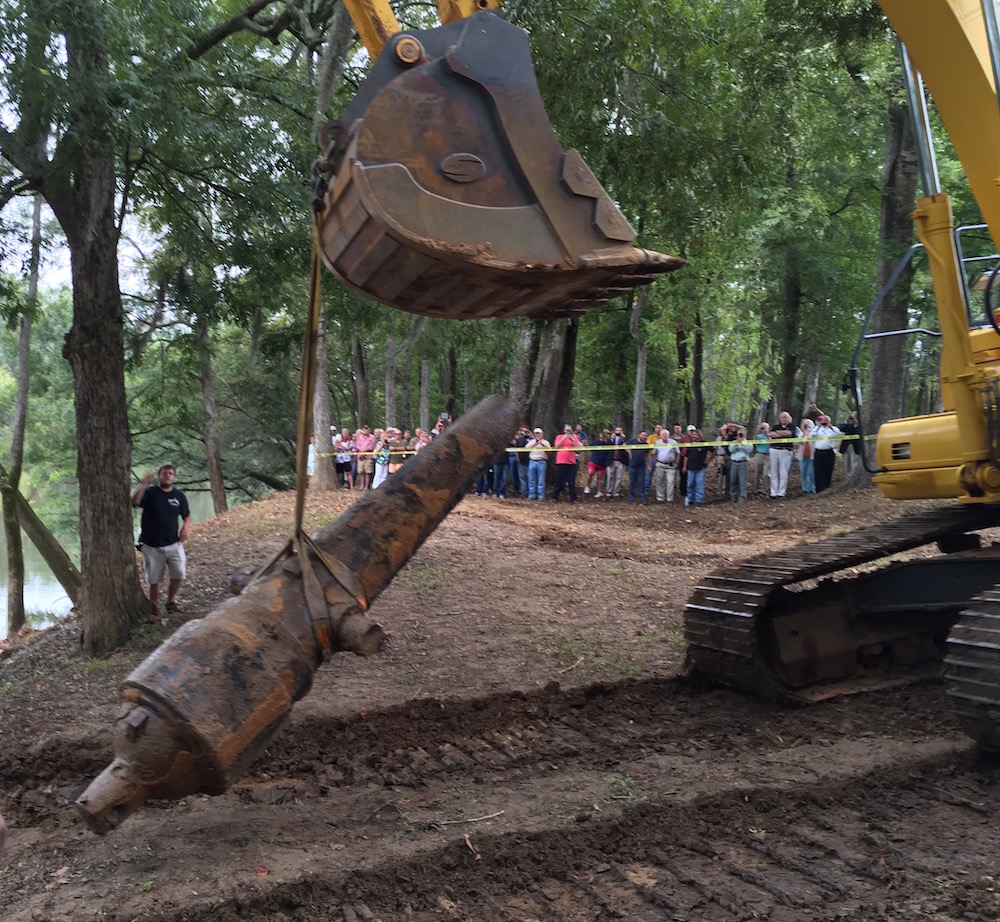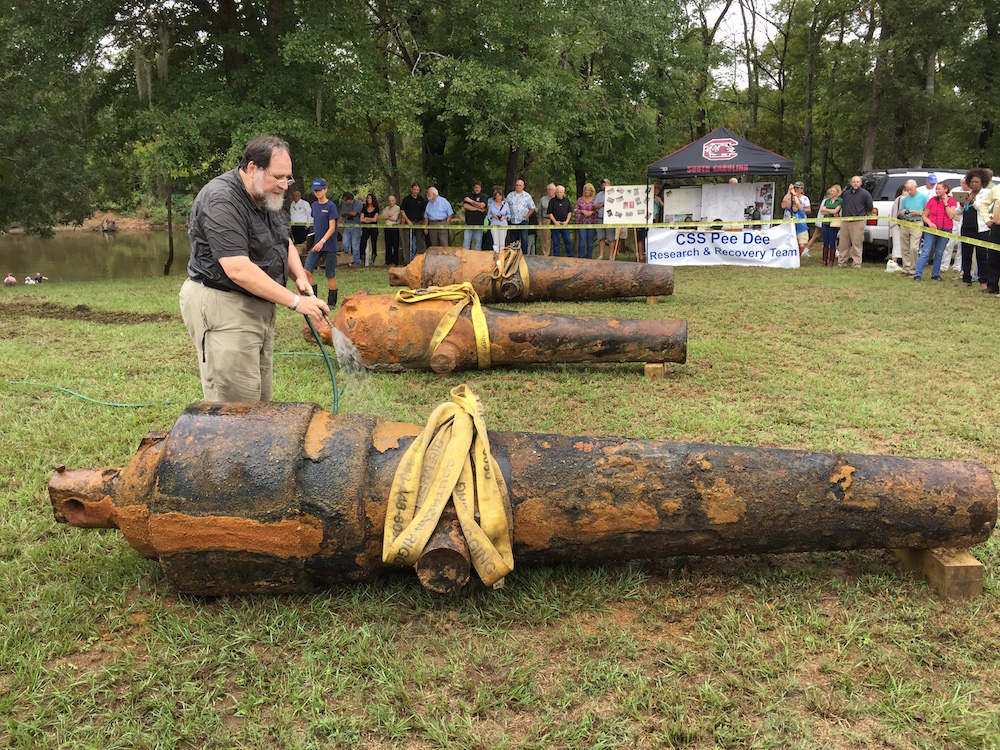Blast from the Past: 3 Civil War Cannons Pulled from River

A community in the southern United States reclaimed an important part of its history Tuesday (Sept. 29), when three Civil War-era cannons were pulled up from the Pee Dee River in Florence, South Carolina.
The now-rusty relics once adorned the deck of a Confederate warship, the CSS Pedee, which was built in a shipyard just east of Florence, South Carolina. The cannons, as well as the remains of the ill-fated ship, have been at the bottom of the river for 150 years.
Heavy machinery was needed to lift the huge cast-iron cannons out of the water, according to WMBF News, which reported that the heaviest of the weapons weighed a whopping 15,000 lbs. (6,800 kilograms). Divers attached the cannons to the arm of a giant front-end loader with ropes, and it took about 30 minutes to pluck each one from the river, WMBF News reported. [Busted: 6 Civil War Myths]
Aside from being coated in mud and muck, the recovered cannons were in surprisingly good condition and are more or less "ready to rock and roll," said Jonathan Leader, South Carolina's state archaeologist, who helped lead efforts to locate the remains of the sunken CSS Pedee. Receding waters left the third cannon (a 7-inch Brooke rifle) exposed, and the gun is a bit corroded as a result, he said.
The recovery of the cannons marks a milestone for Leader and his colleagues at the South Carolina Institute of Archaeology and Anthropology at the University of South Carolina. Between 2009 and 2012, the state archaeologist worked with several institutions, nonprofits and local volunteer organizations to find parts of the ship, including the cannons, and figure out how to get them out of the water. The task of plucking the guns from the river was facilitated by a grant from the Drs. Bruce and Lee Foundation in Florence.
Archaeologists also located the site of the Mars Bluff Navy Yard, where Confederate troops and local volunteers built the CSS Pedee and several smaller boats during the Civil War. But the discovery of the CSS Pedee's cannons is particularly special, Leader told Live Science.

Typically, victors scour the battlefield after a fight, and anything useful is hauled off and used again in future battles, Leader said. After the Civil War, cannons and other weapons were gathered and moved to various federal depots. Piled together and taken from their original context, objects like cannons became anonymous, Leader said, losing what he called their "important connections to battlefields, military actions and communities."
Sign up for the Live Science daily newsletter now
Get the world’s most fascinating discoveries delivered straight to your inbox.
But that is not the case for the CSS Pedee's cannons. Thanks to historical records and oral histories from locals, a lot is known about how and where these cannons were used and who operated them, Leader said. The last time the Confederate warship's cannons were fired, they were pointed at Union Gen. William T. Sherman and his troops, who were advancing into North Carolina, he said.
Fearing the ship would fall into enemy hands, Confederate soldiers threw the cannons overboard before they "scuttled," or deliberately sank the CSS Pedee. The dredged-up weapons serve as a direct link to that moment in history, Leader said, noting that reclaiming the cannons felt like a "handshake over the ages."
But the rusty old weapons aren't just important to archaeologists like Leader; they're also meaningful to the people of South Carolina, many of whom had ancestors that fought in the Civil War and who may have helped construct the USS Pedee at the Mars Bluff Navy Yard.
"This was an early version of a modern dreadnaught," Leader said. "It had the most advanced guns of the day mounted on its decks ... It was a serious threat. And it was built by the locals."
It's only fitting, then, that locals played such an important part in hauling the ship's cannons from the riverbed. Without help from local groups, those cannons would still be lost in the Pee Dee River, Leader said. Now, the community of Florence, South Carolina, can use the objects to make sense of both the past and present. The cannons aren't just old guns, Leader said — they're the "the quilt, the fabric and the thread" that hold people together.
Follow Elizabeth Palermo @techEpalermo. Follow Live Science @livescience, Facebook & Google+. Original article on Live Science.

Elizabeth is a former Live Science associate editor and current director of audience development at the Chamber of Commerce. She graduated with a bachelor of arts degree from George Washington University. Elizabeth has traveled throughout the Americas, studying political systems and indigenous cultures and teaching English to students of all ages.
NASA rover discovers out-of-place 'Skull' on Mars, and scientists are baffled
A long-lost Antarctic ice sheet could predict the future of New York City — one in which Lower Manhattan and Coney Island are 'perpetually submerged'
Watch boozing chimps share alcoholic fruit. Is this how social drinking started?









